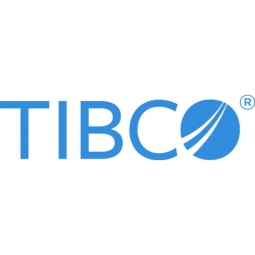Customer Company Size
Large Corporate
Country
- Worldwide
Product
- TIBCO Spotfire
Tech Stack
- Business Intelligence (BI)
- Data Mashups
Implementation Scale
- Enterprise-wide Deployment
Impact Metrics
- Cost Savings
- Productivity Improvements
- Revenue Growth
Technology Category
- Analytics & Modeling - Big Data Analytics
- Analytics & Modeling - Predictive Analytics
Applicable Industries
- Semiconductors
Applicable Functions
- Sales & Marketing
- Business Operation
Services
- System Integration
- Data Science Services
About The Customer
NXP Semiconductors is a global leader in the semiconductor industry, known for its innovative solutions in automotive, industrial, and IoT applications. The company operates with a complex sales model, selling products directly to customers and through distributor channels. NXP has a strong focus on improving margins and managing distributor incentives across different regions. The company has been a long-time customer of TIBCO, leveraging its solutions to enhance business operations. With a workforce of over 1,000 employees, NXP is committed to optimizing its business processes and staying ahead of industry challenges.
The Challenge
In the semiconductor industry, constant margin improvement is a common challenge, and no different for NXP Semiconductors. They have a complex sales model involving direct sales to customers and through distributor channels. Managing distributor incentives and ensuring no margin leakage across different regions was a significant challenge. The traditional, static BI environment was slow and highly dependent on IT, making it difficult to add new data columns or graphs to reports. Analysts spent more time pulling data from various sources rather than analyzing it, leading to delays in identifying and acting on outliers.
The Solution
NXP Semiconductors decided to implement TIBCO Spotfire® to address their challenges. The decision was driven by the need for real-time results and better control over their complex sales model data. Spotfire's BI self-service model allowed NXP to mashup all sales data easily, enabling quick identification of sales data outliers and better management of distributor incentives. The implementation of Spotfire also led to a significant increase in analyst productivity, as they could now spend more time on data analysis rather than data collection. Additionally, NXP experienced improved application performance, as data was readily available without slowing down transactional data systems.
Operational Impact
Quantitative Benefit

Case Study missing?
Start adding your own!
Register with your work email and create a new case study profile for your business.
Related Case Studies.
Case Study
KINESYS Semiconductor Factory Automation Software
KINESYS Software provides both Integrated Device Manufacturer (IDM) and Original Equipment Manufacturer (OEM) customers world-class software products and solutions for advanced wafer and device traceability and process management. KINESYS offers state of the art database technology with a core focus on SEMI standards. KINESYS’ challenge was to make back-end processing failure-free and easy to use for clients while supporting licensing models more adaptable to changing industry needs.

Case Study
Modular AI Defect Inspection Solution for Efficient Semiconductor Equipment Upgrades
Smasoft Technology Co., Ltd., a System Integrator that develops industrial automation software and offers AI application solutions, was commissioned by a semiconductor equipment manufacturer to implement AI inspection features into their Extreme Ultraviolet Light (EUV) pod inspection machines. The existing AOI software in the EUV pod inspection machines could only identify defective products but could not trace the cause of the defects. The manufacturer wanted to upgrade their machines with AI features to make the products more useful. The AI solution needed to complete the analysis of 380 images for a single pod within two minutes and inspect different materials simultaneously. This required multiple sets of AI models for interpretation. The solution also needed to be installed in a cabinet in the lower half of the machines, which posed a challenge due to the limited space. Smasoft needed to purchase a hardware solution with strong computing performance, stable operation, compact size, and flexible configuration to overcome these challenges.
Case Study
Rapid Hybrid Services Deployment for Global Semiconductor Company
The U.S. manufacturer of engineered materials, optoelectronic components, and semiconductors was focused on growth through mergers and acquisitions (M&As). In 2019–2020, it acquired a global electronics firm and needed immediate connectivity and visibility into the acquired firm’s geo-distributed operations. The company had a highly compressed timeline, with only days to integrate the firm’s DDI operations, while deferring a full network migration to a future date. The company was actively engaged in acquiring and merging strategically aligned companies as a key global growth strategy. The company needed to rapidly integrate its new operations, which included significant remote locations in Asia. The company turned to Infoblox to quickly design a highly secure, available, and reliable solution that could deliver full visibility into new sites. It needed dynamic scalability to accommodate its growing operations and the ability to unify a disparate, geo-diverse infrastructure.

Case Study
Optimizing Semiconductor Manufacturing Yield with IoT
A large U.S.-based manufacturer of high-performance semiconductors was facing a significant challenge in optimizing the manufacturing process of its wireless products. The company, which designs and delivers a broad set of cutting-edge products including radio frequency filters, amplifiers, modulators, attenuators, and more, was experiencing lower than expected overall yield in some of its most complex products. This was affecting the company's productivity and profitability, and there was a need for a solution that could predict low-yield wafers early in the process and identify process improvements to increase overall yield.
Case Study
Leveraging Xenko Game Engine for Immersive VR Experiences: A StarBreach Case Study
Silicon Studio, the developer of the open-source cross-platform game engine Xenko, was looking to showcase the impressive graphical capabilities of their product. They aimed to demonstrate the engine's compatibility with VR and its ability to deliver high-quality virtual reality experiences and games. To achieve this, they needed to create a demo game, StarBreach, that would effectively highlight these features. However, they required an experienced art production team that could create high-quality game art for StarBreach. The challenge was not only to create visually appealing assets but also to demonstrate the technological possibilities of the Xenko game engine.




